
Wild flower planting in urban situation, with green-viened white butterfly, Pieris napi. Credit: Paul Hobson
Taking Action For Insects
In 2021, we were awarded a large grant by the government’s Green Recovery Challenge Fund to take action across our nature reserves for invertebrates. It is now time to catch our breath and reflect on what we’ve achieved; the result is astounding.
We had a clear vision from the start. In 2019, Wiltshire Wildlife Trust took part in commissioning a report Insect Declines and Why They Matter. We wanted to demonstrate how it can lead to action and offer opportunities for others to learn.
This was a complex project, pulling together different strands of our work. We aimed high, promised a lot, and our fantastic team of staff, volunteers, contractors, and consultants delivered.
The project was split into four distinct sections: Surveying and Monitoring, Woodlands, Grasslands and Freshwater.
Surveying and Monitoring
How do we know if we’re doing the right thing, in the right place, in the right way? We wanted to complete a rigorous assessment of the invertebrate communities on our nature reserves. Our Ecological Project Officer, Michael New, developed a programme of training events and surveys with an overwhelming take-up from volunteers. We are extremely grateful for the number of experts and specialists who offered their time at no cost, providing an opportunity for both our volunteers and staff to improve their identification skills.
From beetles, bees and butterflies, to ants, spiders and earthworms, over 4,500 species records have been added to our database, with new and rare species discovered. To name only a few of the highlights, at our chalk grassland sites, we recorded rugged oil beetle, large scabious mining bee, hornet robberfly, Roman snail, and butterflies like the dark green fritillary and Adonis blue.
Our lowland grassland reserves also produced some super finds, including the marsh fritillary butterfly, devils-bit jewel beetle, glow worm, lesser emperor dragonfly and moths like the spectacular Clifden nonpareil, as well as the nationally rare downland villa fly. At freshwater sites, we found the tawny longhorn beetle, Desmoulin’s whorl snail, and the nationally scarce bog bush cricket.
Michael has left a legacy of a programme for future years, ensuring the work continues and this project acts as a baseline to identify trends and monitor the impact of our work.
Woodlands
We worked across four of our woodland nature reserves, focusing on opening up the canopy to let light into the woodland floor through thinning, coppicing and ride widening. This will encourage plants essential to the lifecycle of invertebrates such as pearl-bordered fritillary butterflies at Blackmoor Copse. At Sandpool, we left high birch stumps to attract the large belted clearwing moth.
Grasslands
The project’s conservation workers have worked incredibly hard to create a scrub matrix across our grassland and meadow sites for many species such as solitary bees and the rugged oil beetle. Seed from Trust meadows was harvested and sown to enhance the sward at Echo Lodge and Upper Minety Meadows, and a new invertebrate strip was created at Blakehill nature reserve.
Freshwater
It was our water team who got the chance to deliver two of the most visually striking projects for freshwater invertebrates. On the Western Arm of the Hampshire Avon we regraded the steep-sided banks to create a more gradual slope for marginal vegetation to develop and also reconnected the river to the floodplain, creating a wonderful matrix of wet habitats to support invertebrates such as mayflies through all lifecycle stages.
At Southwick Country Park in Trowbridge, we worked with Wiltshire Council to create three scrapes that will be seasonally wet, transforming a uniform field into a diverse habitat for invertebrates.
The project's success has been acclaimed widely and won this year's Conservation Project of the Year award from the Wiltshire Life Awards, sponsored by Ramsbury Brewery.
Why Insects are Important
We know that invertebrates are not only important to our wellbeing due to their beauty and wonder but that they play an important role in:
- Pollination
- Decomposition and waste removal
- Biodiversity life cycles
- Food for other species
- Improving soil health
- Pest control

©Andrew Kerr
Insect declines and why they matter
Read more about the national Action For Insects campaign.

Action For Insects Blog
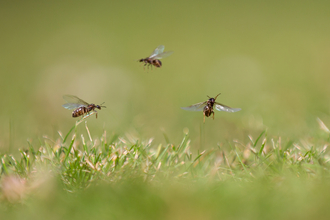
Fascinating flying ants
Sara Booth-Card, ecologist, peatlands and Action For Insects campaigner at The Wildlife Trusts, looks out for the telltale signs of…
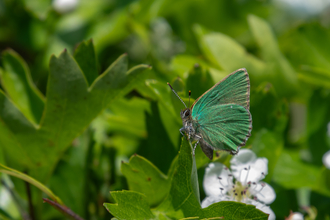
30 Days Wild – Butterflies!
Young Ambassador Chris is aiming to find 30 butterflies in 30 days for 30 Days Wild!

Be vigilant for Asian hornets
The Asian hornet is a threat to Wiltshire's insects. Learn more about them and what to do if you find one.
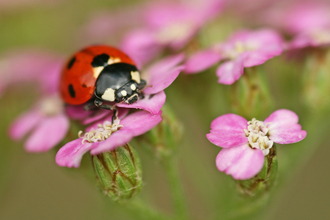
Lovely ladybirds
A closer look at one of the UK’s most popular beetles.

Long legs, short lives
Insect expert Ben Keywood from Sheffield and Rotherham Wildlife Trust takes a closer look at craneflies.
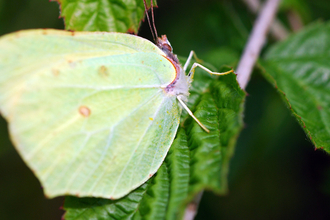
A garden butterfly count
Young Ambassador Chris Bailey took part in the Big Butterfly Count this summer.

The elephant in the room
Late summer is the best time to discover one of the UK’s chunkiest caterpillars, the elephant hawk-moth.
Mothing in Wiltshire
Robin Griffiths from Butterfly Conservation has been recording his sightings of moths for the past 50 years.

Save our wild bees
Our native wild bees are in danger. Young Ambassador Laura investigates.
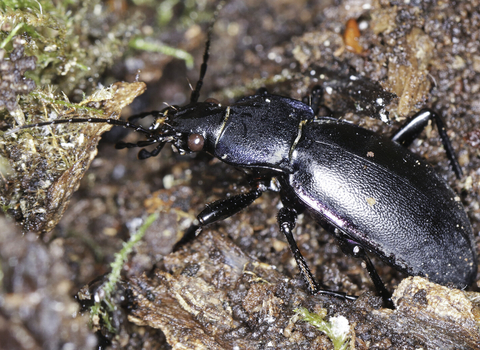
Violet ground beetle © Frank Porch
Webinars
Learn about oil beetles, ground beetles and earthworms in our series of educational webinars.
